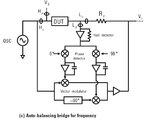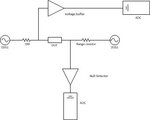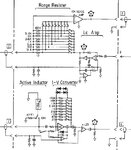Astrid
Full Member level 3

Follow along with the video below to see how to install our site as a web app on your home screen.
Note: This feature may not be available in some browsers.










A DAC with higher resolution, e.g 16-Bit, used as a programmable attenuator for the DDS output signal.What do you mean by "higher resolution attenuator DAC"?
From which document/instrument manual did you take the snippet?I looked at the implementation of the principle of LCR HP and I have several questions


A multiplying DAC with bipolar reference input can be used as attenuator. Achievable bandwidth is of course design depending.how looks programmable atteunator with DAC ?
They are probably different regarding the implementation details you are asking for.I think all autobalancing <=2MHz LRC meter form HP use similar.


